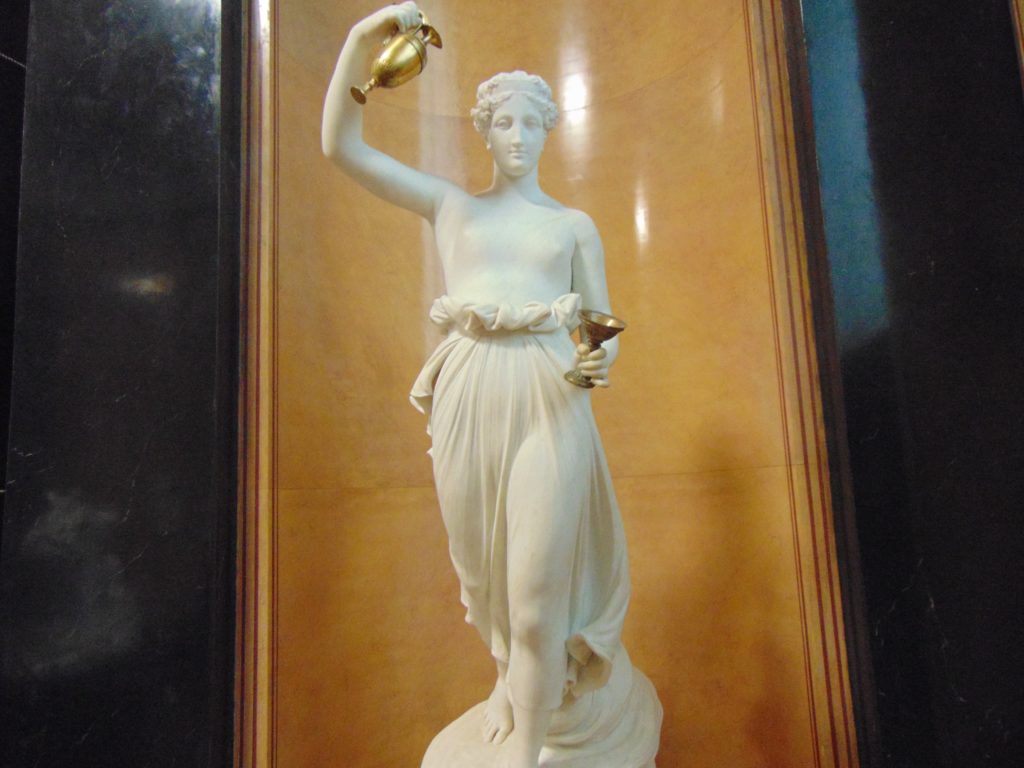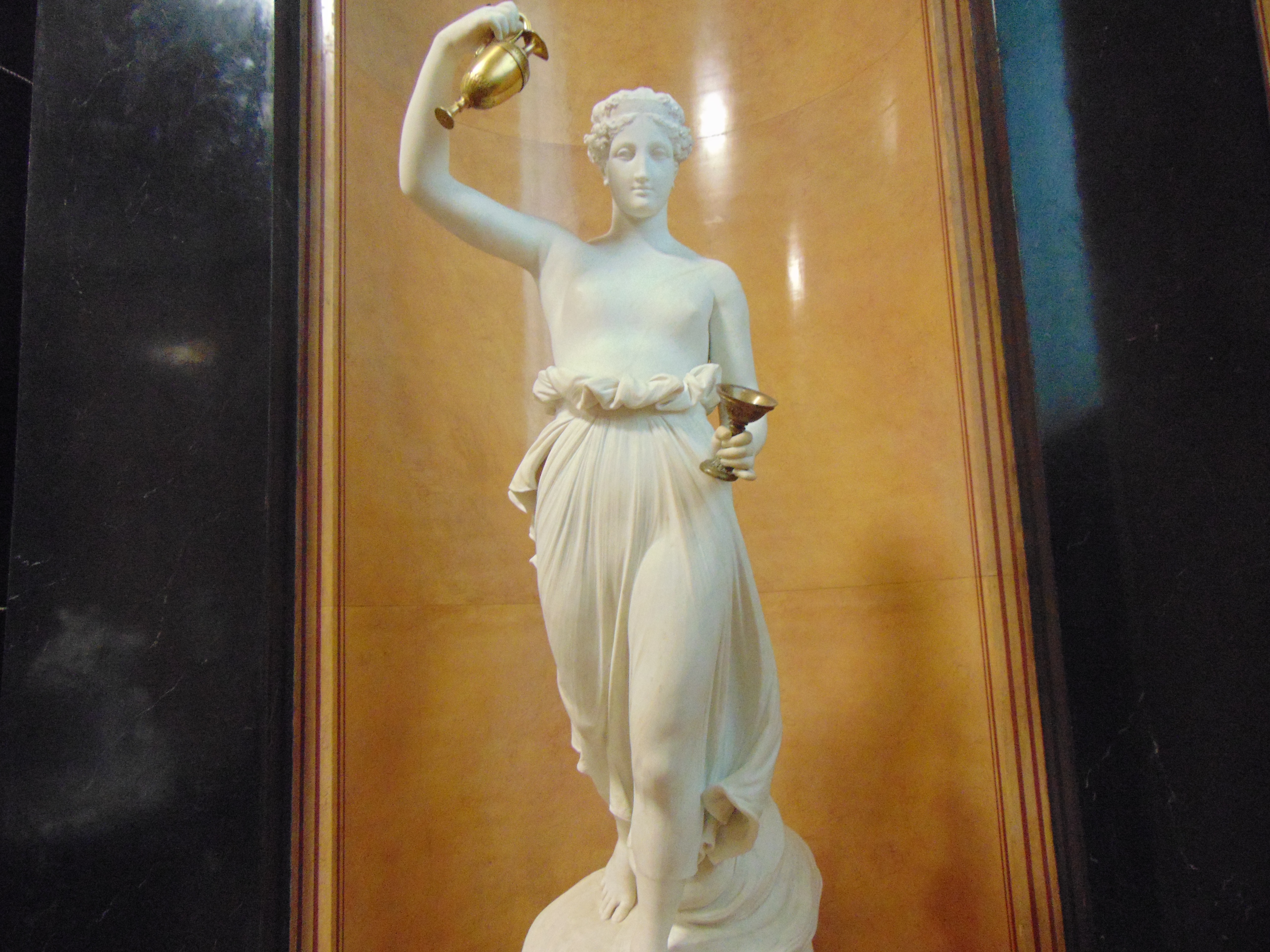
We wanted to take an innocent temporal walk around the Museum Island and instead, like a curse affecting all of those who are concerned with time, we got a bit lost. Without being Kant, Nietzsche, Schopenhauer or Einstein we managed to understand that we understand very little. We entertained ourselves a little, it’s true, maybe that was our real objective, but we don’t know that any more either. In fact, we really aren’t sure of anything any more. History seems infinite, like the universe humankind seems to expand itself in every direction, we have no idea how many histories of humankind there are or whether we ourselves are still primitives or whether our travels will ever have an end.
In spite of having understood nothing of time, now we probably are breathing more calmly and slowly, having unconsciously experienced a sort of mystical, amphibious mutation and perhaps we even came to the same conclusion as Einstein: The most beautiful experience we can have is the mysterious.
On the splendid staircase of the Alte Nationalgalerie, between the second and third floors, we run into the wooden statue from 1917 named “Portrait of the Chimpanzee Missy” crouched on the balustrade. She is thoughtfully watching the people coming upstairs and is seated, let’s put it this way considering her humanoid resemblance, with her arms crossed in her lap.
There is no scientifically secure way of figuring out what Missie is thinking, but nothing can keep us from hypothesizing that she too is making observations on evolutions, involutions and the infinitude of time.
In front of a display case in room 308 in the Neues Museum we no doubt noticed the long-haired and monkey-like – with all due respect, more inelegant than Missie – beast of a man dressed in animal skins squeezing in his large hand a statue of a tiny woman, but one with rather ample breasts and hips, a symbol of fertility.
Thirtyfive thousand years before the birth of Christ, humans made flutes with animal bones, statues of animals and, above all, statues of women.
We certainly read that the statuette of a woman is known as the Venus of Dolni Vèstonice and was sculpted between 25 and 30,000 years before the birth of Jesus, in other words, in the Ice Age, and with that probably were touched that cavemen, before learning any kind of art and prior to the formation of any kind of civilization, sculpted statuettes of women for the cult and protection of fertility. And if in the room opposite, Room 306, we said that war began in the Bronze Age, this Ice Age Venus is definitely older and therefore historically much more significant than war.
A true moment of grace would be to be able to mirror ourselves here on this island in the artefacts of our ancestors to see if we could recognize ourselves, to see whether today we have the same ambitions, the same fears, the same passions.
More beautiful still than getting to know, than understanding and thereafter judging is likely simply looking, with wonder and without any other desire.
When there is no disturbance between us and the thing observed, there are good chances that the temporal and cultural distances that divide us from the past will be dissolved, and that the message from our forefathers and mothers will come to us loud and clear. It is known as an epiphany, an apparition and revelation at the same time.
What is beautiful and what is ugly, what is the border between what is right and wrong, at which point is a balance between humankind and nature established, where does progress end and aggression begin…these are all controversial and mutable subjects. Judgments are also the children of various times and come and go like the moon and the tides. If knowing is above all the disposition to observe the thread that connects one generation to another, one people to another, one language to other sounds, that thread that the greats call culture and children simply adventure, on this island you can read and you can observe, you can marvel and you can watch the clouds, eventually you can even inform yourself but the most precious thing would be to come here with the most humble and blessed ignorance and be entertained by the calmest and sweetest serenity of the dilettante for as long as possible.
The red headphones of the audio guides for the permanent exhibits at the moment are only for adults, even if, naturally, they are not forbidden for minors and employ a simple and clear language. On the occasion of the last exhibit on Impressionism and Expressionism there was the opportunity, however, to listen to the enjoyable audio guides for the young, made just for the exhibition, where young Berliners turned to their fellow young Berliners and we could appreciate the candid comments and flights of imagination. The little things focused their eyes on the details, they were astonished by the colors, played the game “I can see something you can’t see”, imagined making snowmen and going sledding whenever they saw a wintery landscape, could smell the perfume of laundry hung up to dry in the sun in an Impressionist painting, the birds singing in another, tried to understand whether the eyes in one painting had just cried because they seemed watery and red and they asked why, they invented stories, they felt like painters themselves and spoke in first person when recounting what they had just painted, literally trembled with fear when they caught sight of something unsettling, compared the children of the painter Fritz Rumpft – depicted in 1901 by Lovis Corinth in his “The Family of the Painter Fritz Rumpft” and to be found on the second floor of the Alte Nationalgalerie – to their own brothers and sisters and wondered how the Rumpfts managed to resolve the problems related to justice when it came to giving out sweets to all six children, and then they began to talk uninhibitedly about their own problems, as if everything in the end was possible and allowed.
Something resembling that natural relationship to wonder and freedom is the greatest thing we could hope for before entering the incredible, subtle, and seemingly weightless time of listening and hearing the silent stories told by the works of past times, but here very present.
We shall take leave of each other, in the end, full of grace and wonder before the marble figure of Hebe, the goddess of youth, one of the numerous creatures spawned by Zeus, cupbearer of the gods of Olympus whom she served the nectar of immortality, sculpted in 1796 by Canova and on display in Room 1.01 of the Alte Nationalgalerie where one can find the snow white, beautiful and pure so-called neo-classical sculptures of that period, which wanted to rediscover the elegance of the all too idealized classical lines.
A naked chest, youthful breasts just beginning to bud, peaceful and aware she has a glance that expands outwards while at the same time interiorizes everything. Beginning at her hips the dress she wears is moved by a breeze that makes it stick to her legs. Extremely soft, the young girl seems to be delicately striding against the wind, driven forward and upward by an inner grace while the presence of her chest, her arms and her toned legs keep her solidly among us here on earth. Her right arm lightly lifts the amphora while her left holds onto the cup into which she slowly pours the philter of eternal life. Distant and present, her curls held in place by an elegant band decorated with lilies, Hebe, the daughter of Zeus, cupbearer of the gods, seems to be made of light and to want to glide into the steamy and innocent air, wonderfully timeless.
( Translated by Alexander Booth )
© L42 AG

